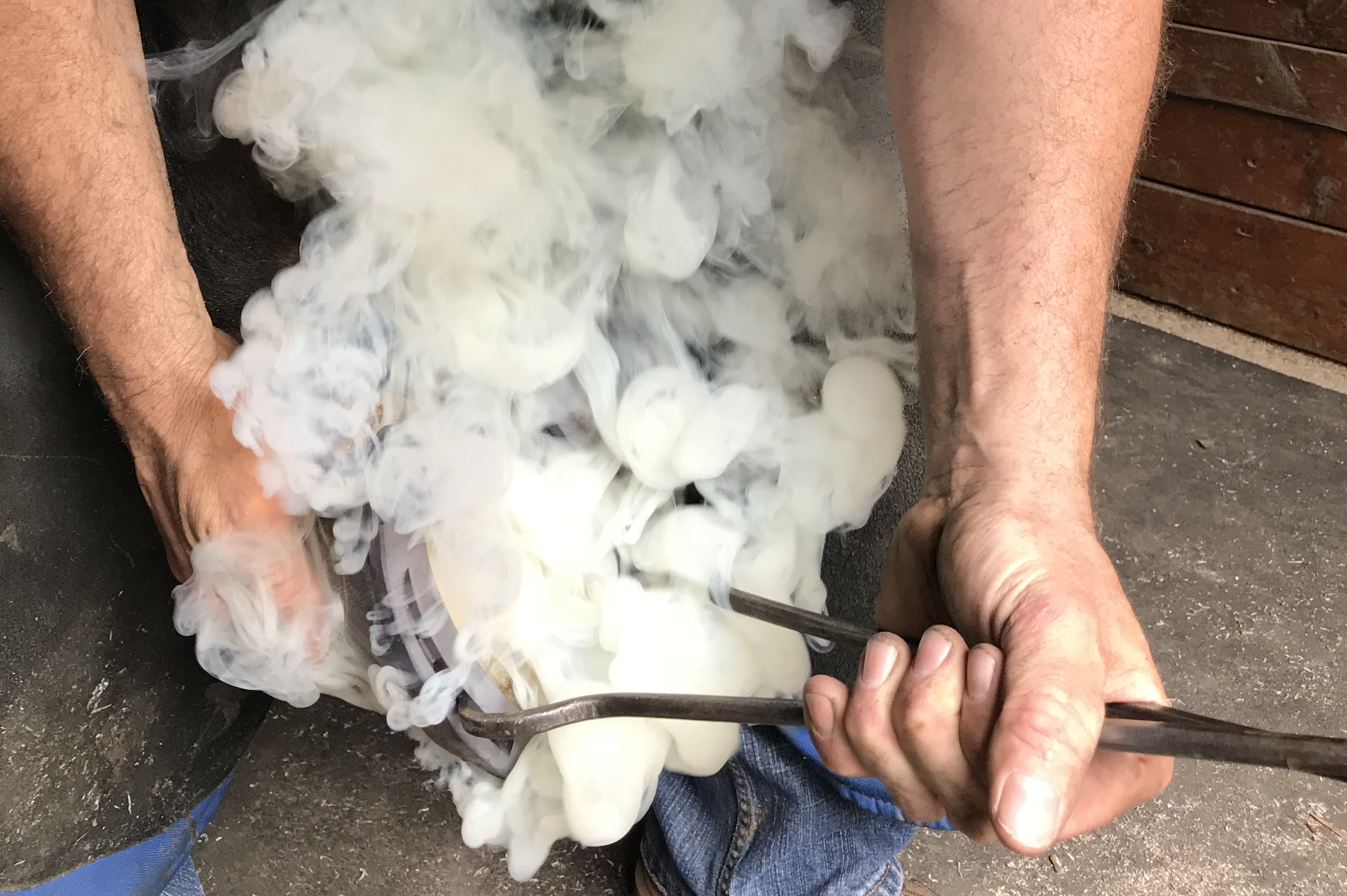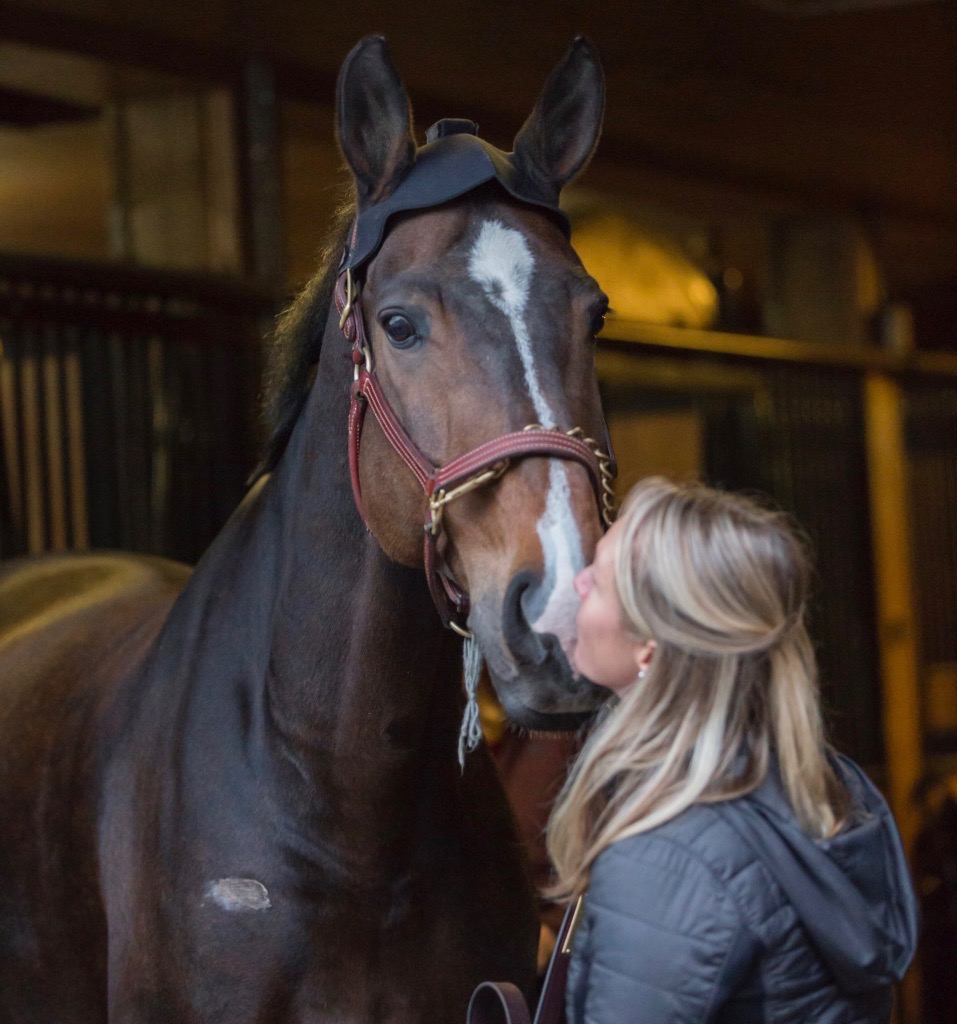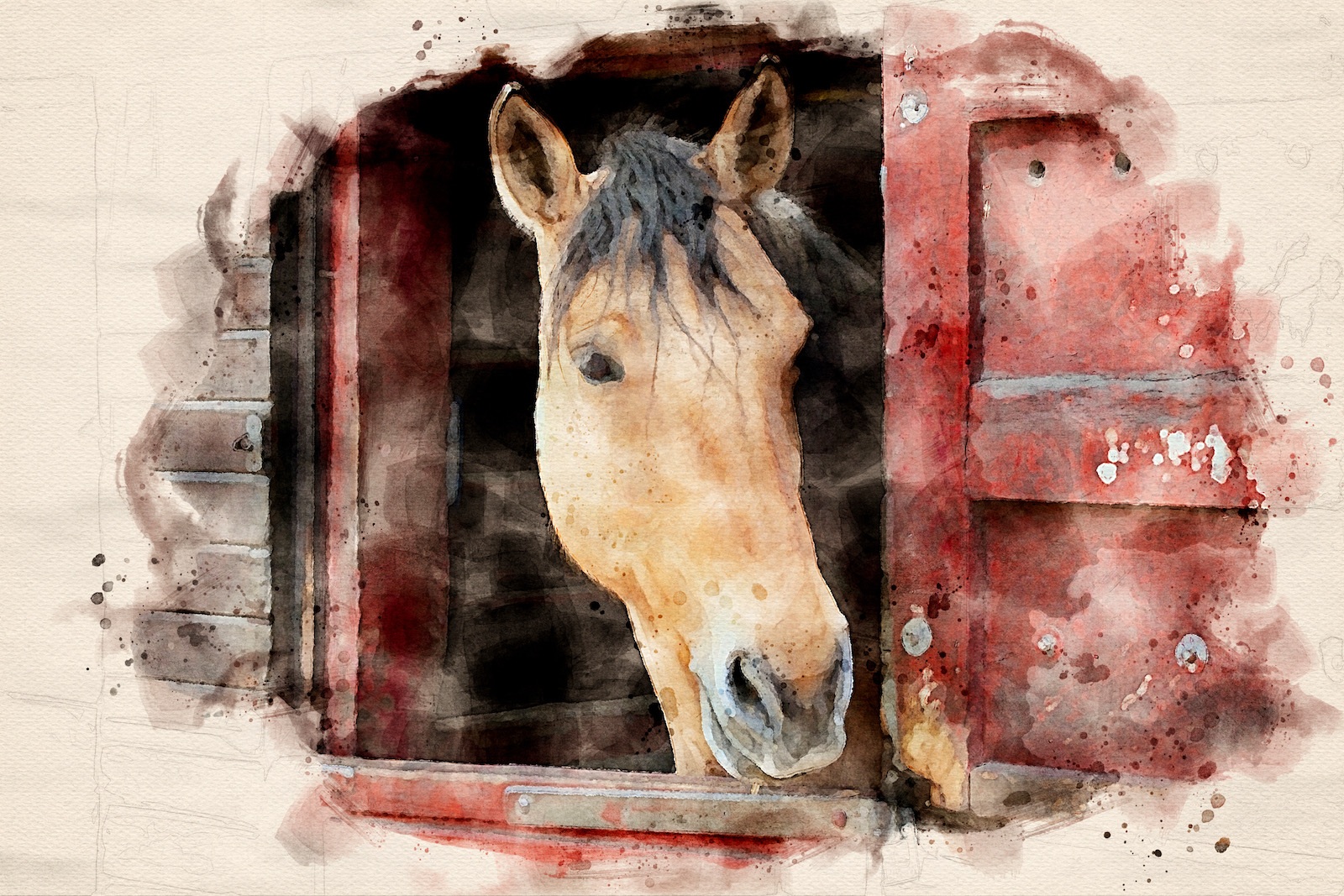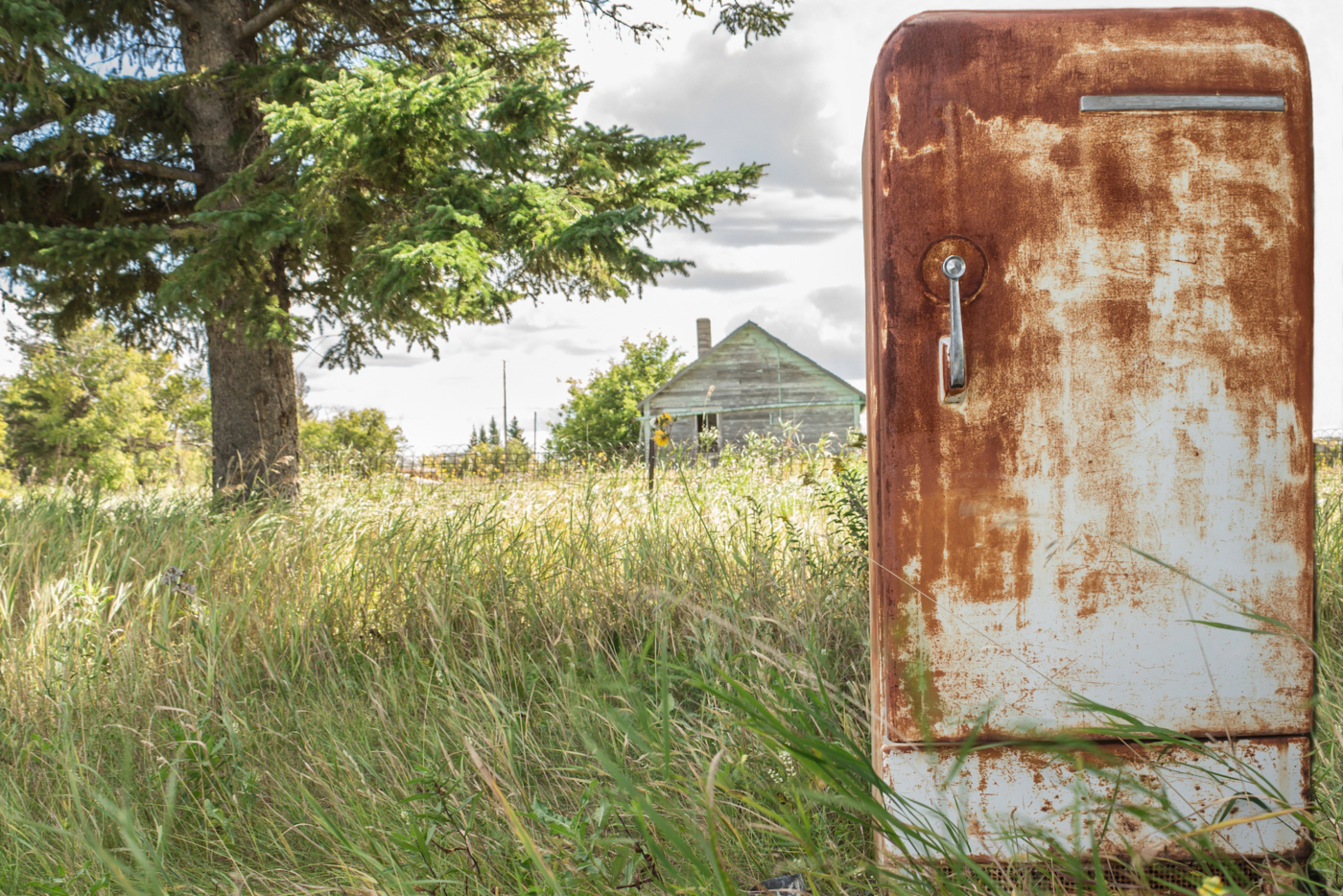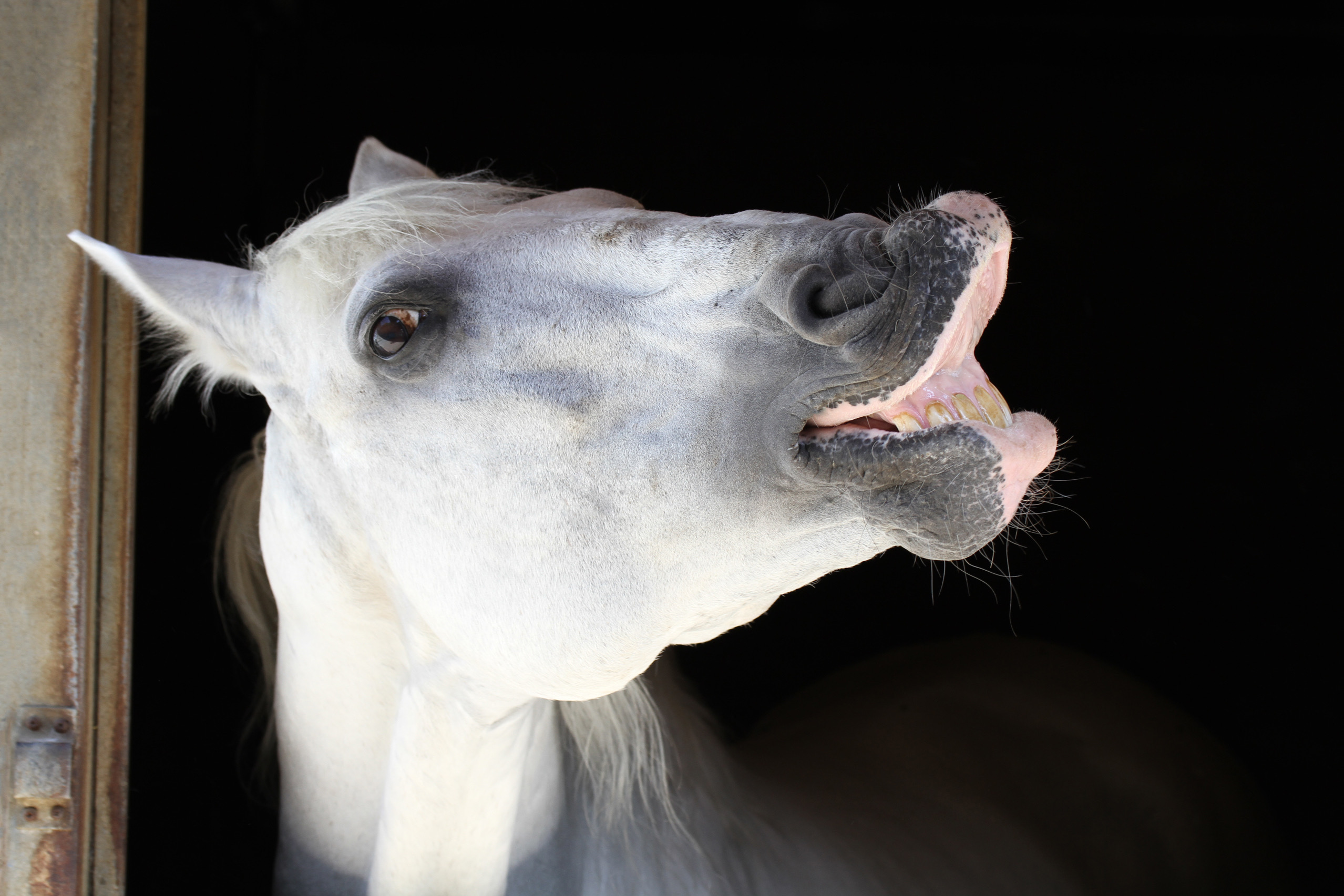A few weeks ago, one of the OR geldings had an acute case of sore feet. We quickly called in the big guns, and a combined visit from the vet and farrier inspired a creative set of new shoes that had him on the mend.
Those visits also gave rise to our three-part series, “Pumped Up Kicks.” The first installments in the series discussed DIY treatments for sore feet, as well as when to call in the vet and the purpose of hoof balance radiographs, respectively. For Part Three, we chased resident OR farrier, Anthony Kipikasha of AMK Horseshoeing, around with a recording device while he shod four geldings (he really enjoyed that). Like many blacksmiths, Anthony is the strong, silent type, but we managed to extract some very interesting information from him.
We still owe him a round of drinks…

The glue-on orthotic that inspired the Pumped Up Kicks series.
What does hoof balance mean to a farrier?
Often when people think of hoof balance, they inadvertently think of “hoof balance x-rays,” because the term and process have grown in popularity over the last decade. For a farrier, hoof balance has always been the entire point of the job, and our goal is to help a horse distribute his weight on his feet properly, without creating pressure points that can cause pain or damage to the limb.
How do you achieve “balance” the old school way (a.k.a. without a vet involved)?
As a farrier, I’ve had to train my eye to see what I believe a set of x-rays would tell me. I use multiple markers in the horse’s foot to formulate this idea, and then I also look over the horse’s entire body. I look at its conformation and I watch it move. I create a mental hoof balance x-ray in my mind before I begin, and then trim the foot from that.
What do you do differently when a vet sends hoof balance radiographs to you?
When a veterinarian sends me radiographs, I work closely with him/her to come up with a plan to accommodate any changes that need to be made. Joint spacing and sole depth are two of the most important visual markers that can be measured on digital images.
You like to watch the horses walk before you work on them. How does this help you?
We’ve talked only about static balance thus far: that is the balance of the foot when the horse is standing still, and is one hundred percent weight bearing on all four limbs. We also need to discuss dynamic balance, which is observed when a horse is in motion, and essentially tells me what areas of its feet it’s loading and/or not loading while moving. The combination of static and dynamic balance helps me start the thought process about how I’m going to address the horse’s conformation through trimming, and ultimately, how I’m going to shoe the horse.

Anthony working on one of the OR geldings.
What is the most common issue that you encounter, and how do you fix it?
There’s a broad spectrum of hoof issues that I come across every day. The reason I love my job is because every day it provides me with a different challenge. However, I don’t use the word “fix.” I simply aid a pathology, and everything begins with trimming. I can play all sorts of tricks with a fancy shoe, but if the trim isn’t correct, it’s all pointless. As a farrier, I need to be a few steps ahead of the horse, hopefully making necessary changes before issues occur.
It is definitely becoming more of a podiatry industry, and we take a lot more instruction from the vets now than we used to. The introduction of shoes made of synthetics and aluminums/alloys has forced the traditional blacksmiths to make room in their shoeing rigs to adjust to a new wave of products. Of course, farriers won’t ever be completely phased out, but I do think that in the higher ends of the various horse sports, shoeing horses is going to become more of medical procedure. The world may not need someone who knows how to work steel to put a set of shoes on a horse.

This is an annoying question but it begs to be asked…why do horses lose shoes?
Here are a few reasons: improper fitting/poorly forged shoes, muddy paddocks or poor barn management, overreaching, or simply being overdue for shoeing.
What is a peeve of yours when it comes to your clients?
Sticking a microphone in my face while I’m trying to shoe their horses, for starters.
(Burn. But okay, we deserved that.)
Oh, and when the light doesn’t work above the horse I’m shoeing.
(Right. We’ll get that fixed.)
But seriously, I’ve been in the industry long enough that I really only have to deal with the clients I like, so no one bothers me too much!
Outside Rein is a service with a unique point of view, delivering a variety of equine-related topics to your inbox every Friday. If you’re not signed up, please do! We promise we’re not spammy, and we frequently offer exclusive discounts on products you’ll love, but only to our email subscribers. See you next Friday!


